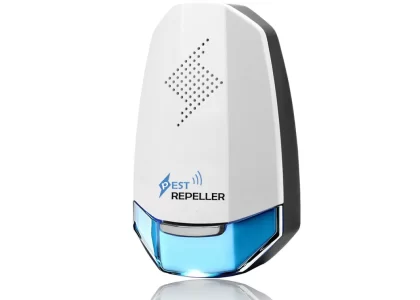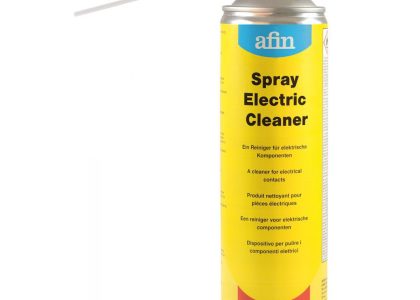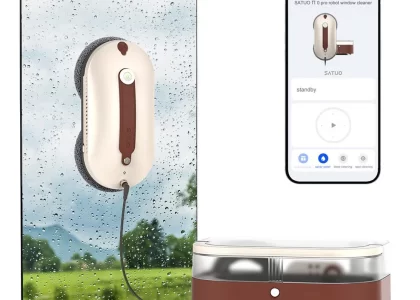Maintaining a clean washing machine is vital for ensuring its efficiency and longevity. Over time, washing machine interiors can accumulate detergent residue, fabric softener, and dirt, leading to unpleasant odors and less effective cleaning performance. This comprehensive guide will walk you through the steps needed to clean a top loader washing machine thoroughly, ensuring it remains in peak condition and continues to clean your clothes effectively. We will cover the tools and materials needed, a step-by-step cleaning process, and maintenance tips to keep your washing machine in excellent shape.
 Some common types of washing machines:
Some common types of washing machines:
Top-Loading Washing Machine:
Top-loading machines are the most traditional and widely used type of washing machine. They have a vertical drum that is accessed from the top. These machines are generally more affordable and offer a shorter wash cycle. They are also ergonomic, as users don’t have to bend down to load and unload laundry. However, top-loading machines typically use more water and electricity compared to other types.
Front-Loading Washing Machine:
Front-loading machines have a horizontal drum that is accessed from the front. These machines are known for their efficiency in terms of water and energy consumption. They typically have larger capacities, making them suitable for families with heavy laundry loads. Front-loading machines also provide better cleaning performance and are gentler on clothes due to their tumbling action. However, they tend to have longer wash cycles and can be more expensive upfront.
High-Efficiency (HE) Washing Machine:
High-efficiency machines, whether top-loading or front-loading, are designed to conserve water and energy. They use advanced technologies to optimize water usage and reduce detergent consumption. HE washing machines often have special features like faster spin speeds and enhanced stain removal capabilities. They are a popular choice for those looking for eco-friendly options and reduced utility bills.
Compact Washing Machine:
Compact washing machines are specifically designed for small spaces or apartments where space is limited. These machines have smaller capacities but offer similar functionality as standard-sized machines. They are often top-loading or front-loading and may include additional features like a built-in dryer for space-saving convenience.
Washer-Dryer Combo:
Washer-dryer combo machines combine the functions of a washing machine and a dryer in a single unit. They are ideal for those with limited space who want the convenience of both appliances without the need for separate installations. Washer-dryer combos can be either top-loading or front-loading and come in various sizes and capacities.
Smart Washing Machine:
Smart washing machines are equipped with internet connectivity and advanced features. They can be controlled remotely through mobile apps and may include smart functionalities like automatic detergent dispensing, customized wash programs, and remote monitoring. Smart washing machines offer convenience and enhanced control over laundry processes.
Each type of washing machine has its own advantages and considerations. When choosing a washing machine, consider factors such as your laundry needs, available space, energy efficiency, features, and budget. Evaluating these factors will help you select the washing machine type that best suits your requirements.
 Why Cleaning a Top Loader Washing Machine is Important
Why Cleaning a Top Loader Washing Machine is Important
Enhanced Performance
Effective Cleaning: Regular cleaning ensures that your washing machine operates efficiently, providing consistently clean clothes.
Reduced Residue: Eliminating detergent and fabric softener buildup enhances the machine’s performance.
Prolonged Lifespan
Less Wear and Tear: Regular maintenance prevents excessive wear and tear, prolonging the machine’s lifespan.
Avoidance of Repairs: Keeping your machine clean reduces the likelihood of future breakdowns and costly repairs.
Improved Hygiene
Odor Elimination: Cleaning the machine helps eliminate unpleasant odors caused by mold, mildew, and bacteria buildup.
Healthier Laundry: A clean machine ensures that your clothes are washed in a hygienic environment, making them safer to wear.
Tools and Materials Needed
Essential Cleaning Supplies
White Vinegar: A natural disinfectant that helps remove odors and buildup.
Baking Soda: An abrasive cleaner that helps lift dirt and grime.
Dish Soap: Effective for removing grease and residue.
Bleach (Optional): For thorough disinfection, though it should be used cautiously.
Sponge or Cloth: For wiping down surfaces.
Old Toothbrush: For scrubbing tight areas.
Gloves: To protect your hands while cleaning.
Optional Supplies
Q-tips: For cleaning small crevices.
Lemon Juice: An alternative natural cleaner with a fresh scent.
Commercial Washing Machine Cleaner: Available for a more targeted cleaning solution.
 Step-by-Step Guide to Cleaning a Top Loader Washing Machine
Step-by-Step Guide to Cleaning a Top Loader Washing Machine
Preparation
Empty the Machine
- Remove Laundry: Ensure all clothes and items are removed from the washing machine.
- Inspect Interior: Check the drum for any foreign objects, such as forgotten coins or paper clips.
Gather Supplies
- Collect Materials: Gather all necessary cleaning supplies for easy access.
- Wear Gloves: Put on gloves to protect your hands from cleaning agents.
Cleaning the Drum
Step 1: First Cleaning Cycle with Vinegar
- Set Water Temperature: Set the machine to the highest water temperature setting and the largest load size.
- Add Vinegar: Pour four cups of white vinegar into the drum.
- Start Cycle: Run a complete wash cycle without any clothes.
Step 2: Second Cleaning Cycle with Baking Soda
- Add Baking Soda: After the vinegar cycle is complete, add one cup of baking soda to the drum.
- Start Cycle: Run another full wash cycle with hot water to remove any remaining odor and buildup.
 Cleaning the Agitator and Other Components
Cleaning the Agitator and Other Components
Step 1: Remove Agitator (If Applicable)
- Consult Manual: Check your washing machine’s manual for instructions on removing the agitator, if possible.
- Remove and Inspect: Remove the agitator and inspect it for buildup and debris.
Step 2: Clean Agitator and Components
- Mix Soap Solution: Mix dish soap with warm water.
- Scrub with Toothbrush: Use an old toothbrush to scrub all parts of the agitator and any removable components.
- Rinse and Dry: Rinse thoroughly with water and let them dry before reinstalling.
Cleaning the Dispensers and Exterior
Step 1: Clean Detergent and Fabric Softener Dispensers
- Remove Dispensers: If removable, take out the detergent and fabric softener dispensers.
- Soak in Vinegar Solution: Soak the dispensers in a solution of equal parts water and vinegar for 30 minutes.
- Scrub and Rinse: Scrub with a toothbrush to remove buildup, rinse thoroughly, and let dry.
Step 2: Wipe Down Exterior
- Use Damp Cloth: Use a damp cloth with a mild dish soap solution to wipe down the exterior of the machine.
- Dry Surface: Dry the exterior with a clean towel to prevent streaks and water spots.
Final Steps
Step 1: Run a Rinse Cycle
- Empty Drum: Ensure the drum is empty of any remaining cleaning agents or residue.
- Run Rinse Cycle: Run a final rinse cycle with hot water to remove any leftover cleaning solutions.
Step 2: Leave Lid Open
- Air Dry Drum: Leave the washing machine lid open to allow the drum to air dry completely.
- Prevent Odors: This helps prevent the growth of mold and mildew.
Regular Maintenance Tips
Weekly Maintenance
Quick Wipe Down: Wipe down the drum, lid, and exterior after your last load of the week.
Leave Lid Open: Always leave the lid open between loads to allow air circulation and prevent mold growth.
Monthly Maintenance
Clean Dispensers: Remove and clean detergent and fabric softener dispensers.
Run Vinegar Cycle: Run a hot water cycle with vinegar to keep the drum fresh and clean.
Quarterly Maintenance
Inspect Hoses: Check the water supply hoses for any signs of wear or leaks.
Deep Clean: Perform a thorough deep clean of the entire machine, following the step-by-step guide detailed above.
Troubleshooting Common Issues
Persistent Odors
Use Bleach: If odors persist after cleaning with vinegar and baking soda, run a hot water cycle with one cup of bleach. Ensure the room is well-ventilated and follow the cycle with a rinse cycle to remove any bleach residue.
Clean Rubber Seals: Inspect and clean the rubber seals around the lid to remove any mold or mildew that may be causing odors.
Residue Buildup
Reduce Detergent Use: Using too much detergent can lead to residue buildup. Reduce the amount used and opt for high-efficiency (HE) detergents.
Run Extra Rinse Cycles: Running an extra rinse cycle can help remove leftover detergent and fabric softener.
Ineffective Cleaning
Check Water Temperature: Ensure you are using the appropriate water temperature for each load. Hot water is more effective at removing dirt and buildup.
Maintain a Balanced Load: Overloading the washing machine can prevent clothes from being cleaned effectively. Follow the manufacturer’s guidelines for load size.
Alternative Cleaning Methods
Using Lemon Juice
Natural Fresh Scent: Lemon juice is a natural cleaner with a fresh scent.
Mix with Vinegar: Add half a cup of lemon juice and half a cup of vinegar to the drum and run a hot water cycle.
Commercial Washing Machine Cleaners
Specific Formulation: Commercial cleaners are specifically designed to clean washing machines and remove buildup. Follow the product instructions for best results.
Effective Results: These cleaners can provide a deep clean and are convenient to use.
 Conclusion
Conclusion
Cleaning a top loader washing machine is an essential maintenance task that ensures its efficiency, prolongs its lifespan, and maintains a hygienic laundry environment. By following the step-by-step guide and implementing regular maintenance tips, you can keep your washing machine in top condition. Whether using natural cleaning agents like vinegar, baking soda, and lemon juice, or opting for commercial cleaners, maintaining a clean washing machine is straightforward and highly beneficial. Incorporate these practices into your routine, and you’ll enjoy fresher laundry and a well-functioning appliance for years to come. Happy cleaning!





